
Top 10 Tools for Detecting ChatGPT, GPT-4, Bard, and Claude
Top free tools for detecting thesis, research papers, assignments, documentation, and blogs generated by AI models.
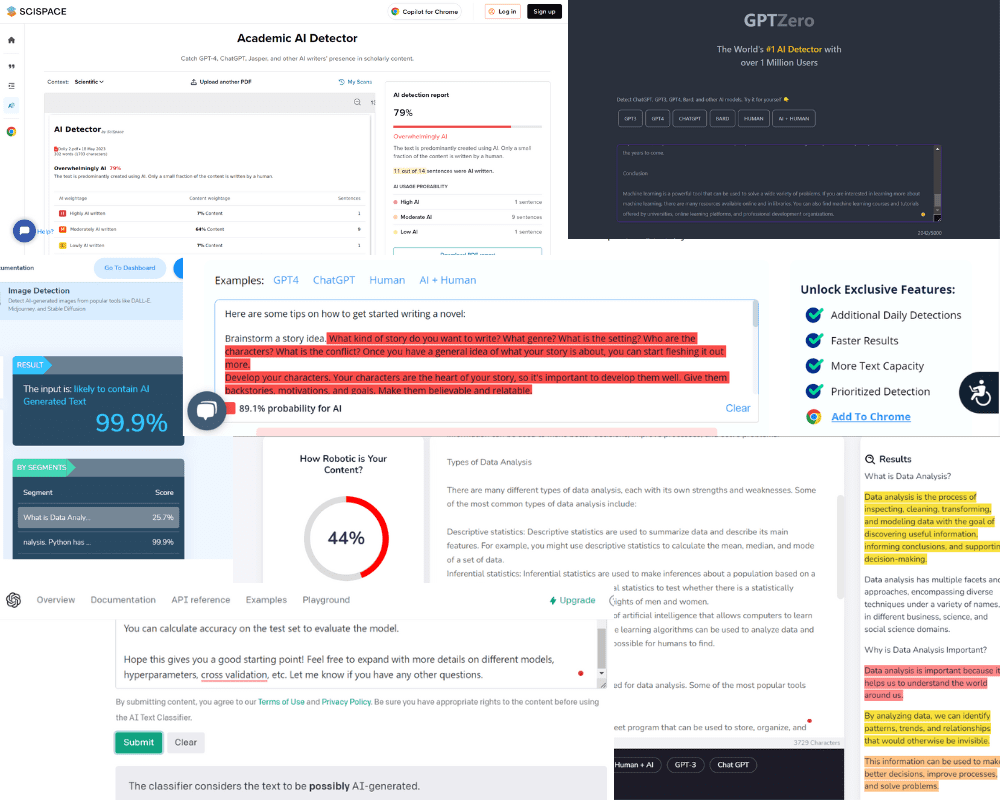
Image by Author
We live in an era of artificial intelligence (AI) boom, where new large language models (LLMs) that can write like humans are released every week. These models can generate highly creative content, and unfortunately, some students and professionals are misusing them to plagiarize.
As a result, AI detection tools have become essential for every classroom, workplace, and research institute. All of the tools mentioned in this blog are free, and some of them even come with Chrome extensions so that you can detect content on the go.
1. GPTZero
GPTZero has been significantly improved. It is now highly accurate, easy to use, and comes with a Chrome extension. You can use it to detect a wide range of AI-generated text, including text from the latest models like Bard (PalM 2), ChatGPT, GPT-4, and other open-source models. It is also fast and highlights the generated text for easy identification.
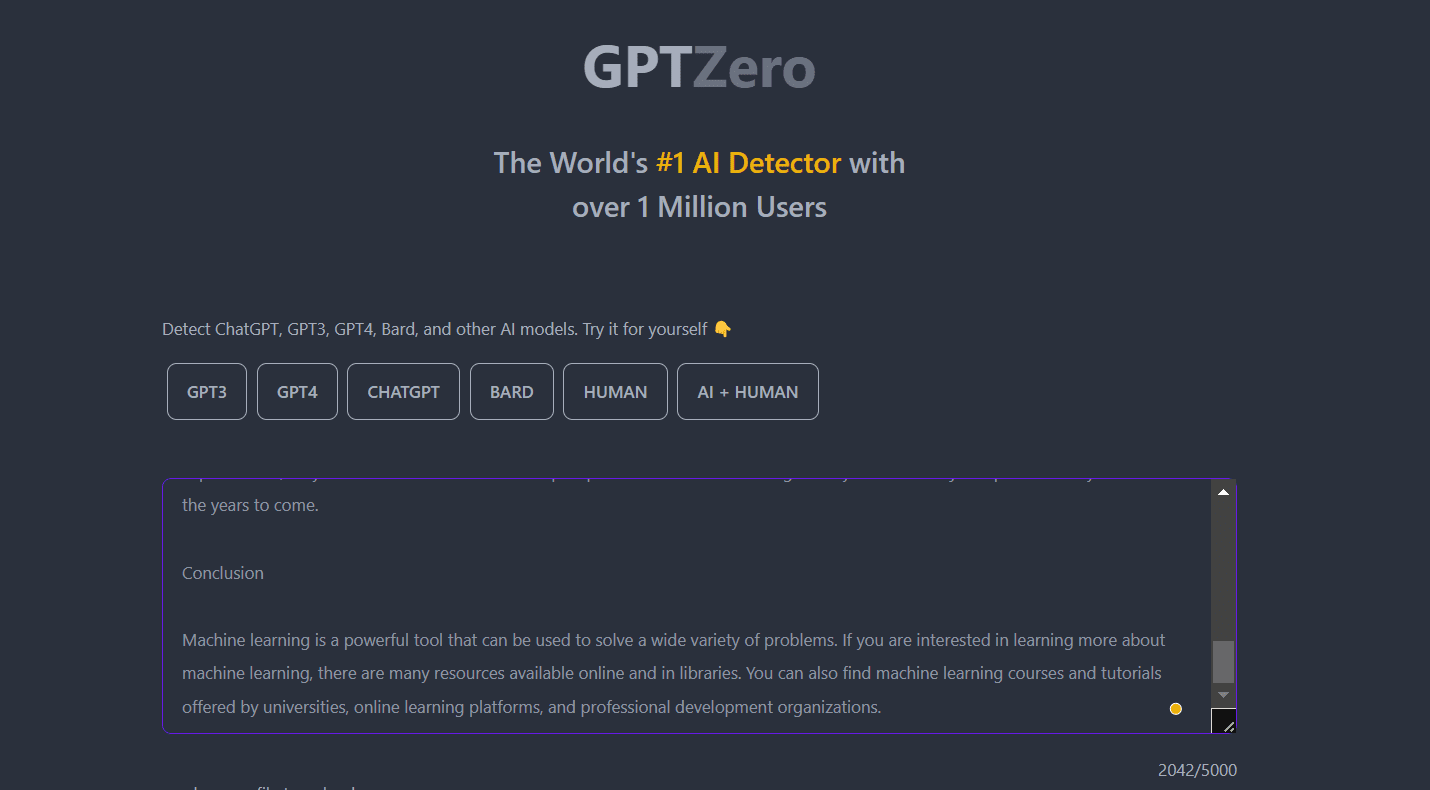
Image from GPTZero
2. OpenAI AI Text Classifier
OpenAI's AI Text Classifier is highly accurate, but it does not provide additional information about the content. I use it daily to maintain quality assurance, and I am satisfied with the results. It works for New Bard, ChatGPT, GPT-4, and other LLaMA-based models.
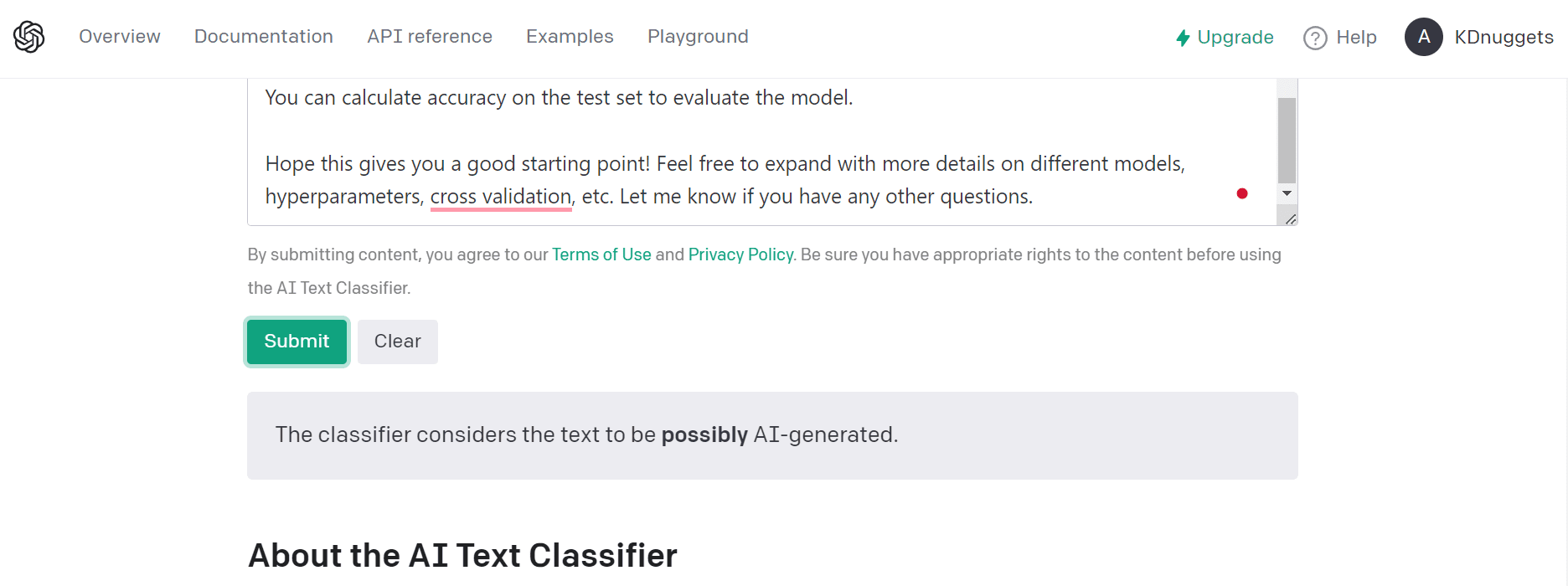
Image from OpenAI
3. CopyLeaks
I was introduced to CopyLeaks by a Reddit user in the r/freelanceWriters subreddit. It is a fast, accurate plagiarism checker that comes with a simple Chrome extension. You can even hover over highlighted text to check the popularity of AI. It can detect Bard, ChatGPT, GPT-4, and other large language models (LLMs).
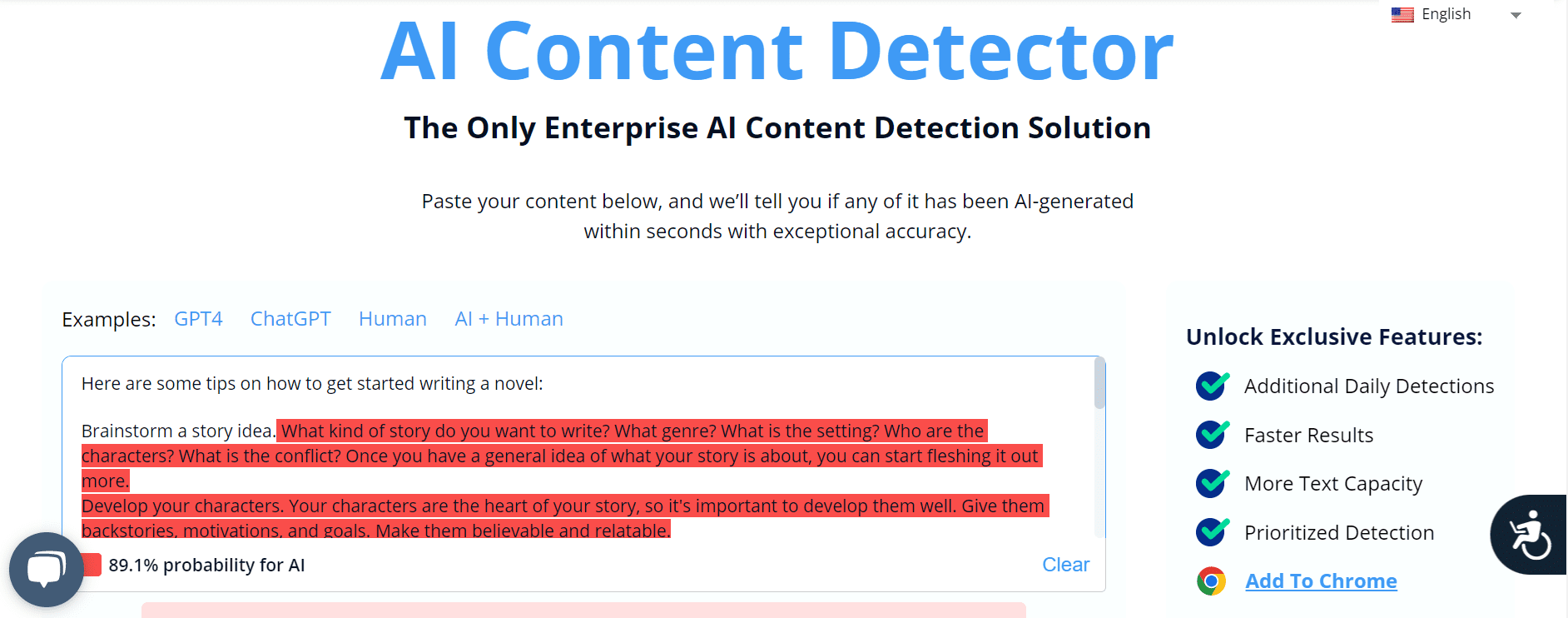
Image from CopyLeaks
4. SciSpace
The SciSpace Academic AI Detector is a bit different from the other tools I've mentioned. It is highly accurate, but it was specifically designed to detect scholarly content in PDFs. There is no copy and paste option at the moment, but the tech team is working on adding that feature. You can upload any type of academic work as a PDF, and SciSpace will generate results.
I tested SciSpace with content generated by Bard, ChatGPT, and HuggingChat, and it accurately detected all of it.
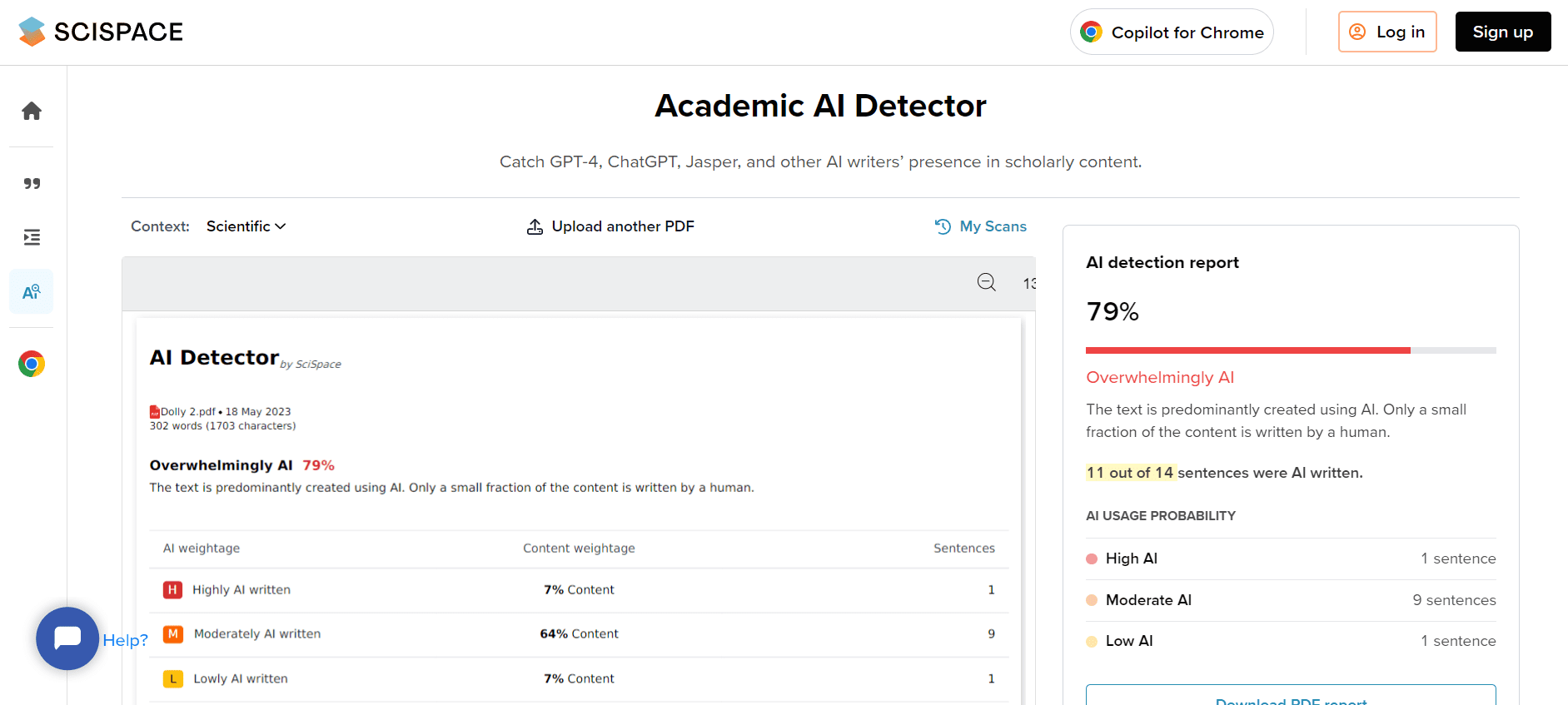
Image from SciSpace
5. Hive Moderation
Hive Moderation’s AI Generative Content Detection occasionally misidentifies human-generated content as AI. To ensure reliable results, it is advisable to have a backup tool when using it as the primary resource. The AI Generative Content Detection provides results accompanied by probability percentages and segments. Furthermore, it offers the capability to detect AI-generated images from platforms such as DALL-E, Midjourney, and Stable Diffusion.
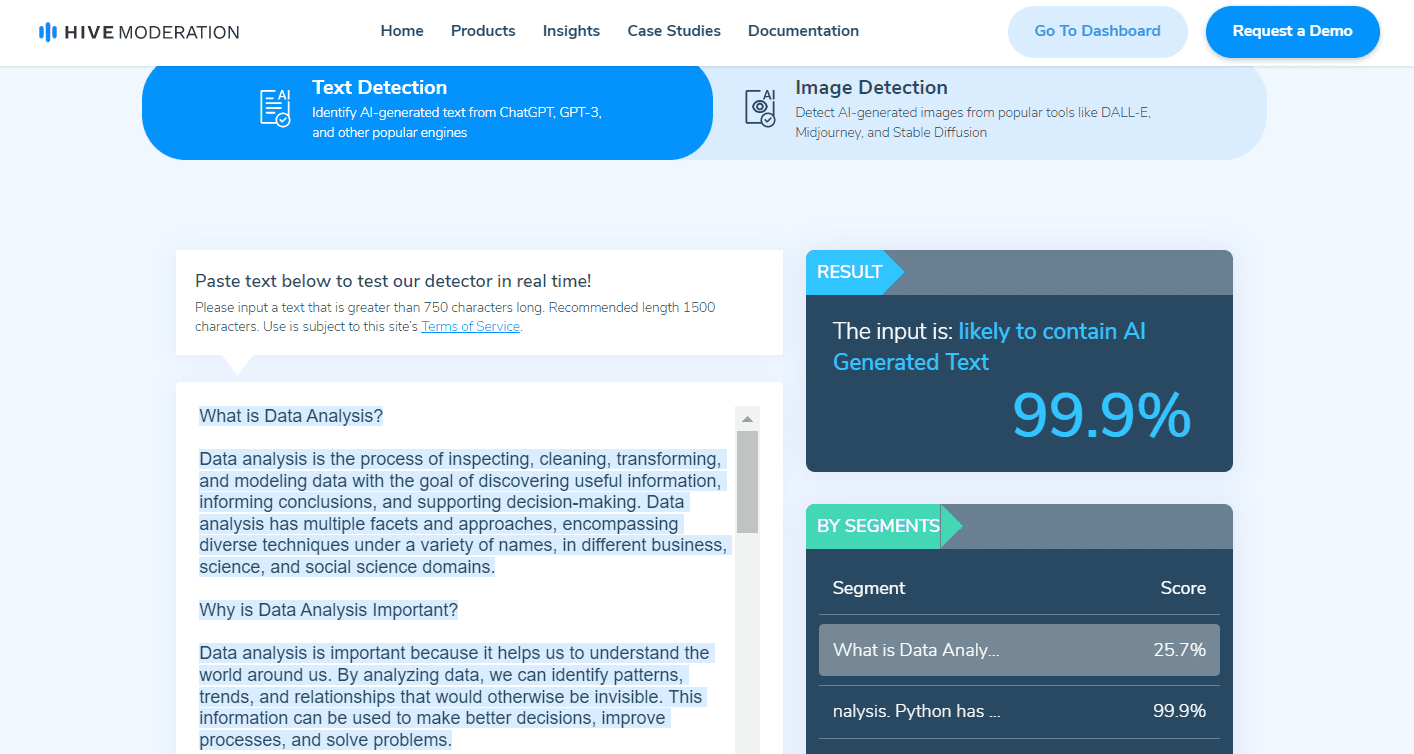
Image from Hive Moderation
6. Content at Scale
Content at Scale’ AI Content Detector is simple to use and produces fairly accurate reports on predictability, probability, and pattern. It works with all kinds of latest large language models (LLMs) and highlights content based on the variable probability of AI-generated work.
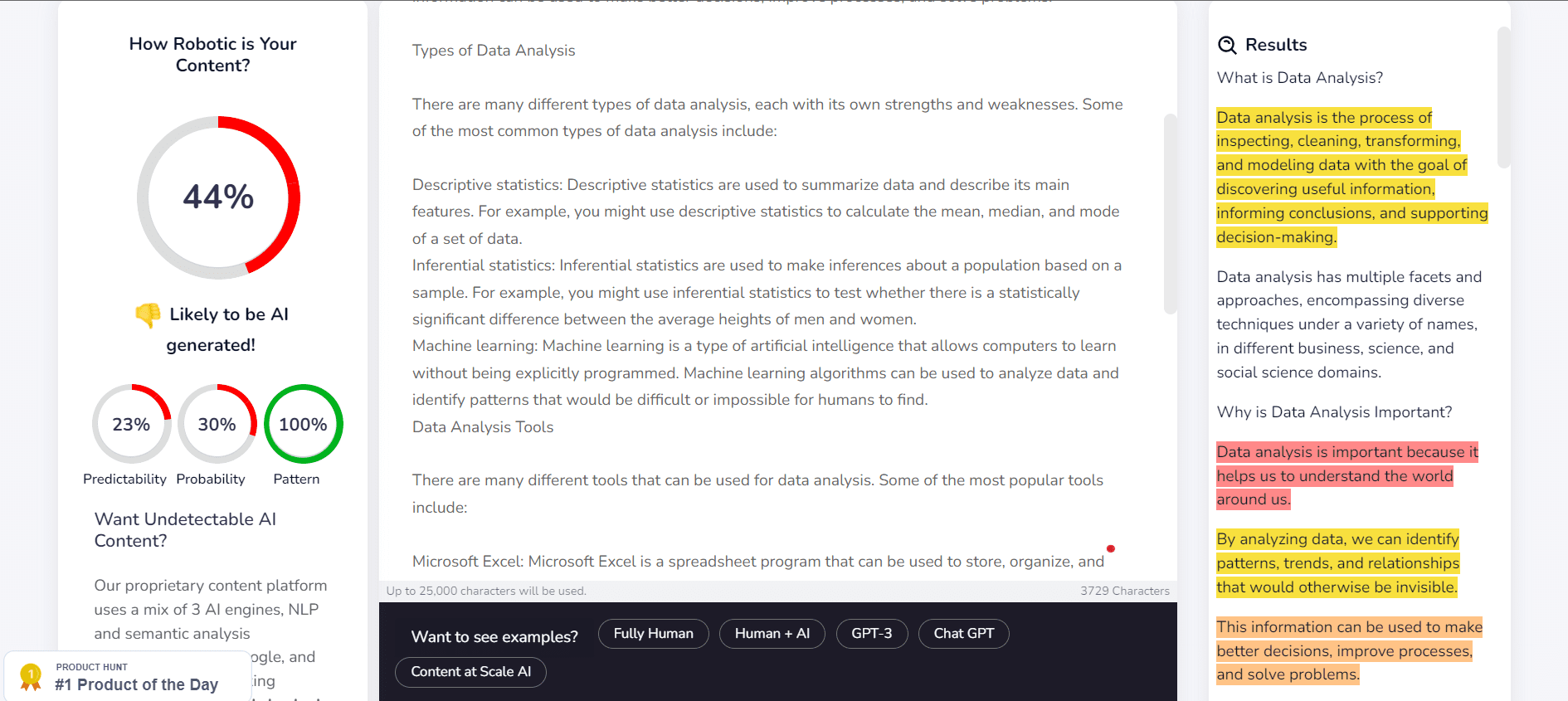
Image from Content at Scale
7. Hello Simple AI
The ChatGPT Detector by Hello Simple AI is a free, open-source tool that can be used to detect text generated by ChatGPT. It is hosted on Hugging Face Spaces and provides fast and fairly accurate results. The detector is not as accurate as the OpenAI classifier, but it does provide two metrics (GLTR and PPL probability) that can help you determine if the content is generated by AI or not.
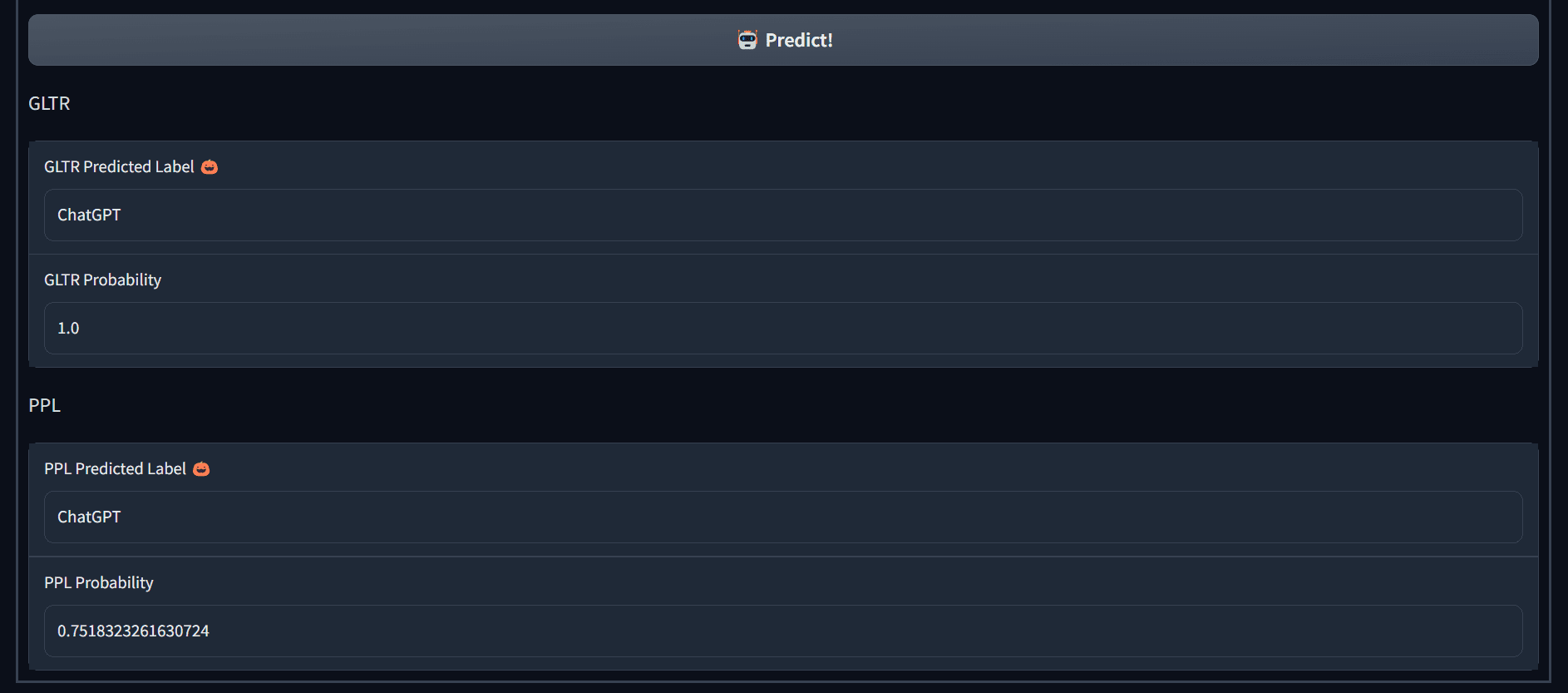
Image from Hugging Face
8. OpenAI HF Detector
The OpenAI Detector is a free, open-source tool that can be used to detect text generated by OpenAI's GPT language model. It is hosted on Hugging Face Spaces and provides fast results. However, the detector can be highly inaccurate, especially when it comes to detecting newer versions of OpenAI’s models and other open-source large language models.
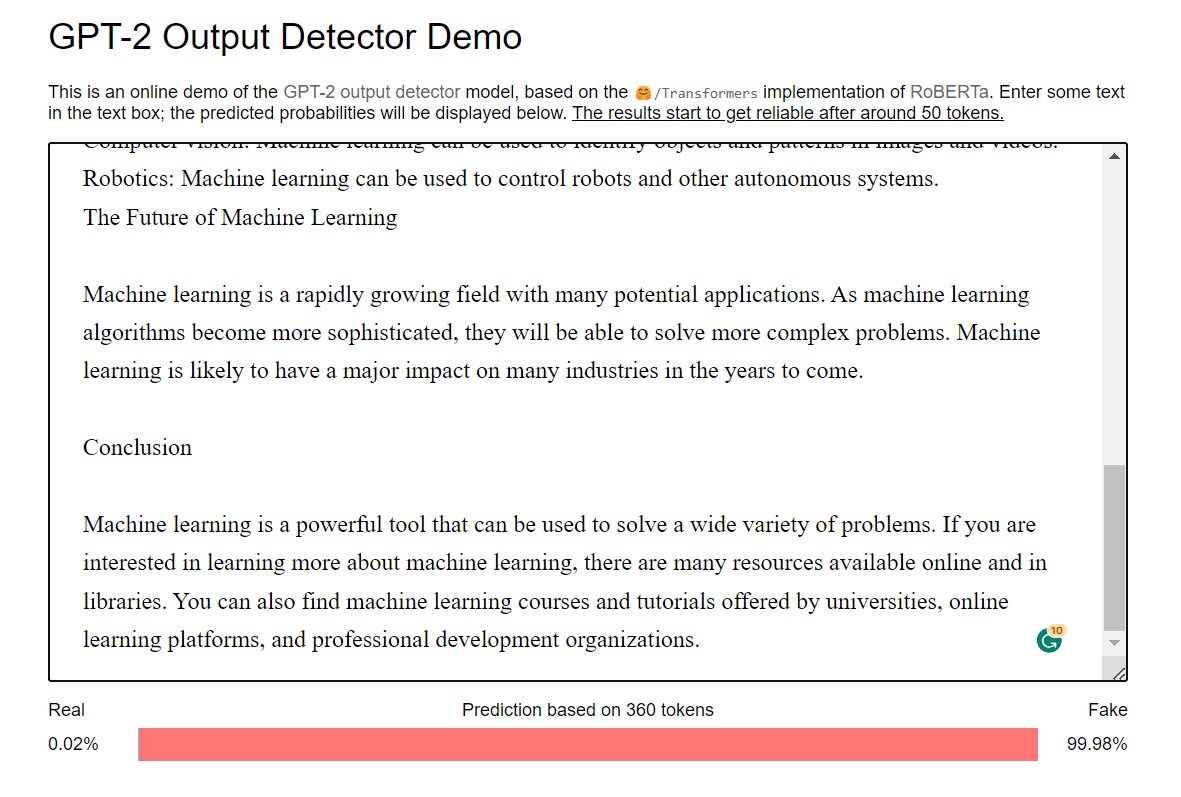
Image from Hugging Face
9. Corrector.app
Corrector.app’s AI Detector is a fairly accurate tool that can be used to detect text generated by ChatGPT, Bard, and other older versions of large language models (LLMs). However, it is not able to detect newer versions of LLMs. This is because the AI Detector works by analyzing the syntax and semantics of the text, and newer LLMs are better at generating text that is indistinguishable from human-written text.
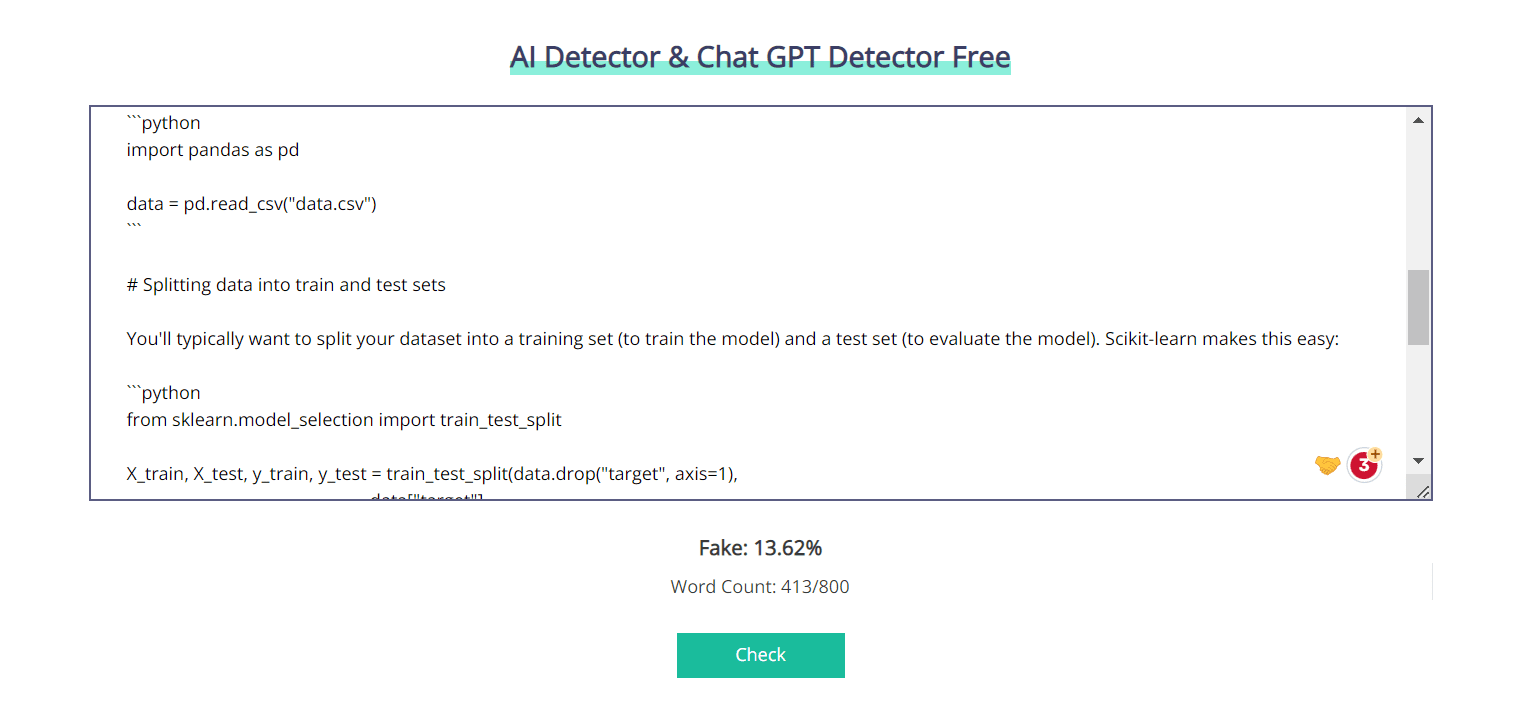
Image from Corrector.app
10. Writer.com
Writer.com’s AI Content Detector concludes our list, presenting itself as the least accurate option with a character limitation of 1500. It serves as a fallback solution when other tools are unavailable or ineffective.
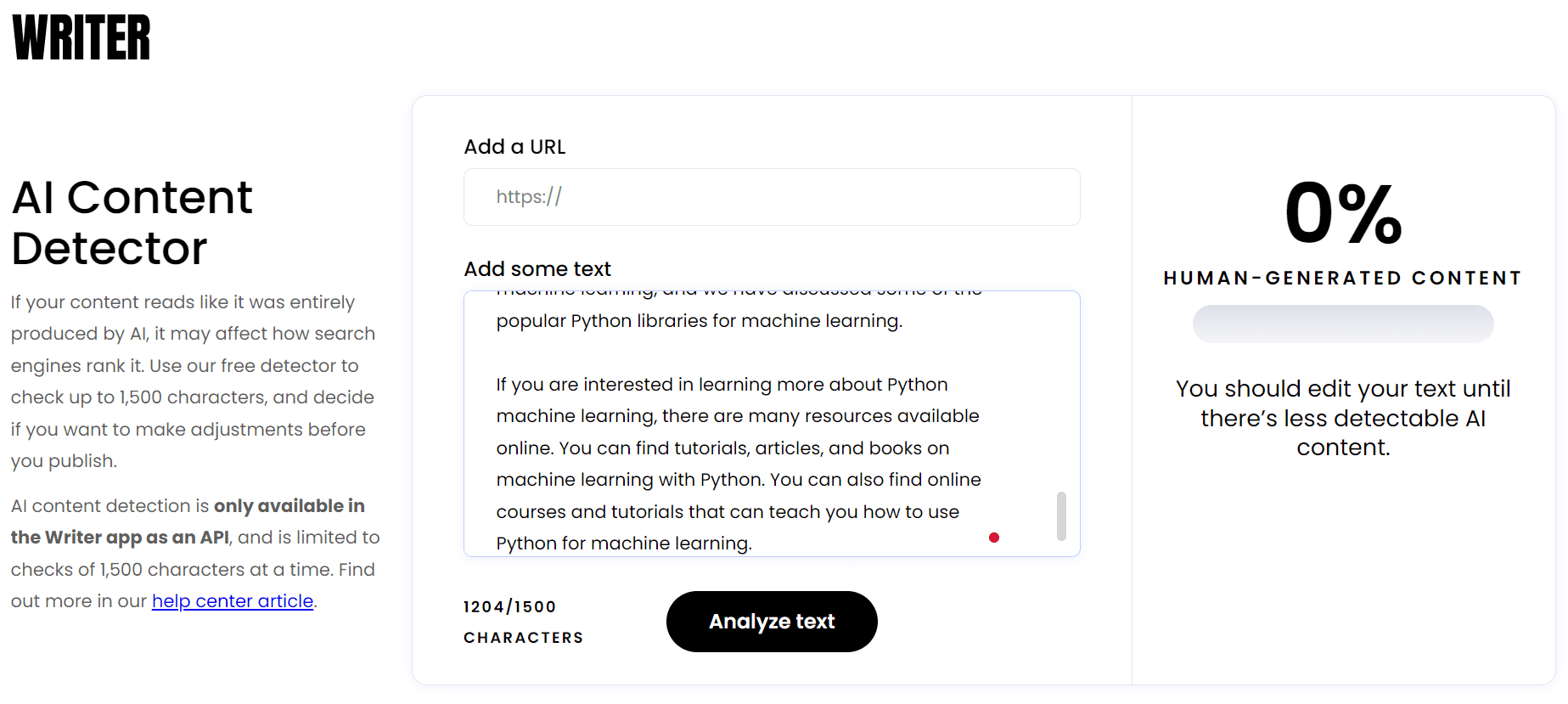
Image from Writer.com
Abid Ali Awan (@1abidaliawan) is a certified data scientist professional who loves building machine learning models. Currently, he is focusing on content creation and writing technical blogs on machine learning and data science technologies. Abid holds a Master's degree in Technology Management and a bachelor's degree in Telecommunication Engineering. His vision is to build an AI product using a graph neural network for students struggling with mental illness.
